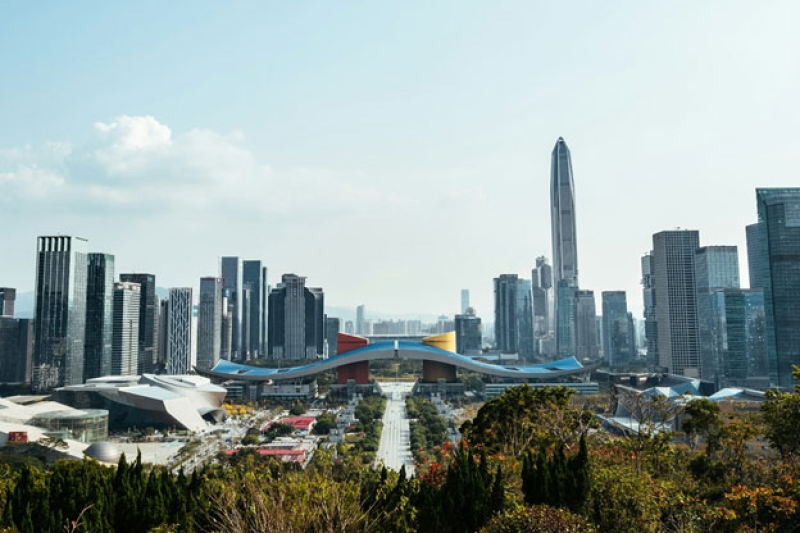- Security Council Divided on United States' Venezuela Action |
- Over 1.53m voters register for postal balloting: Shafiqul Alam |
- Bangladesh Bank to liquidate 9 NBFIs in financial sector reforms |
- Govt Moves to Clear Tk20,000cr Dues to Avoid Summer Outages |
- Maduro Pleads Not Guilty in US Court, Claims Presidency |
Global South Urges Action as SDG Energy Targets Stall

Shenzhen China, a city made up of 47 percent clean energy, with a population of 17.56 million people.
At the UN 2025 High-Level Political Forum last week, global energy leaders warned that without urgent action to expand access to clean energy, hundreds of millions would remain vulnerable, and the world would risk missing its 2030 Sustainable Development Goals (SDG) deadline.
At a tense side event titled “Advancing Energy Transition in the Global South”, Fu Cong, China’s Permanent Representative to the UN, opened with a stark message: “At present, we are falling far short of implementing the UN 2030 Agenda.” He highlighted energy insecurity as a major obstacle requiring coordinated and accelerated action.
Xin Baoan, Chairman of the Global Energy Interconnection Development and Cooperation Organization (GEIDCO) and President of the China Electricity Council, stressed that energy is a key driver of economic growth and sustainable development.
“Only 17 percent of the 169 SDG targets are currently on track,” he warned, citing a staggering $4 trillion annual global investment gap. He added that shifting to low-carbon power systems is now an “urgent priority.”
Baoan shared that China now generates over 2,100 gigawatts (GW) of clean energy, making up 60 percent of its total power mix, from wind, solar, and hydropower. He suggested that China’s progress could serve as a model for countries in the Global South.
He proposed a three-point roadmap:
Ensure Energy Supply: Optimise clean energy use and expand access to underserved regions, reducing the number of people without electricity.
Drive Economic Growth: Use energy infrastructure to boost industrial development, attract investment, and generate employment.
Promote Coordinated Development: Strengthen South-South cooperation and share energy resources to drive regional growth.
Yin Bo, Director of the Cooperation Division at GEIDCO, highlighted a stark imbalance: while the Global South accounts for 80% of the world’s population, it contributes only 40% of global economic output. From 2015 to 2022, GDP per capita growth rates in the Global South fell below earlier periods, signalling a worsening development crisis.
Energy inequalities are widening: average energy capacity in the Global South rose from 155 watts to 293 watts per person between 2015 and 2022. In contrast, the Global North saw growth from 691 to 1,073 watts per person.
Rola Dashti, Executive Secretary of the UN Economic and Social Commission for Western Asia (UNESCWA), reported that over 40 million people in the Arab region still live without electricity, and 60 million rely on unsafe cooking fuels. She noted that in this region, energy access is not just about climate—it’s about development and survival.
Yet, progress is emerging:
Jordan: Two-thirds of new cars sold last year were electric.
Algeria: Chinese-supported EV production lines launched with 200,000-unit capacity.
Morocco: A $2 billion lithium processing facility was established.
Dubai: The world’s largest single-site solar power station now supplies a major data hub.
Iraq: The GCC Interconnection Authority linked its power grids, supplying 600 MW to key areas.
Claver Gatete, Executive Secretary of the UN Economic Commission for Africa, highlighted Africa’s paradox: holding 60% of global solar potential, yet 600 million Africans still lack electricity. With Africa’s population expected to reach 2.5 billion by 2050, energy demand will far outstrip current supply.
Out of $3 trillion invested in global energy in 2024, less than 3% went to Africa. Gatete stressed that global energy goals cannot be met without Africa’s inclusion.
Navid Hanif, UN Assistant Secretary-General for Economic Development, confirmed that two-thirds of SDG targets are lagging, with universal access to electricity remaining a distant goal.
Despite challenges, the event ended on an optimistic note, underlining China’s role in partnering with the Global South to bridge the energy access gap and support sustainable, long-term development.

